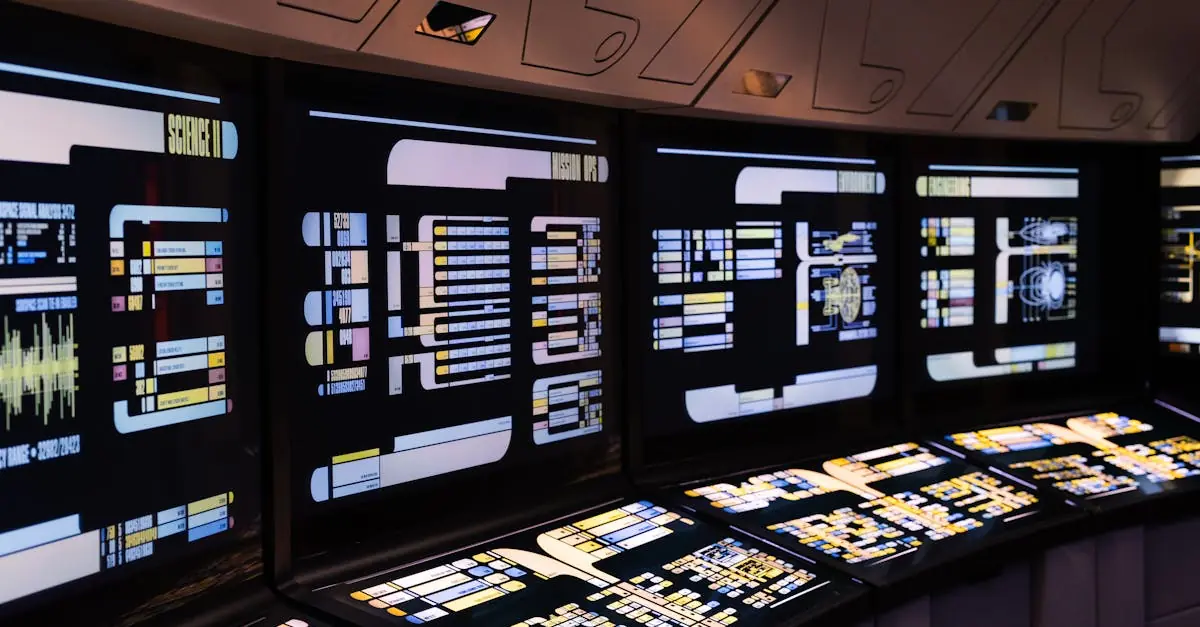Table of Contents
ToggleIn a world where energy bills can feel like a second mortgage, energy-efficient systems are the superheroes we didn’t know we needed. These systems not only save the planet but also keep the wallet happy. Imagine slashing those utility costs while still enjoying a cozy home. Sounds like a dream, right?
Overview of Energy-Efficient Systems
Energy-efficient systems play a crucial role in modern homes and businesses. These systems utilize advanced technologies to reduce energy consumption while delivering the same, if not better, performance. Common examples include LED lighting, energy-efficient appliances, and high-performance HVAC systems.
Energy-efficient HVAC systems optimize indoor climate control, using techniques such as variable-speed motors and smart thermostats. Such advancements can lead to significant reductions in energy use, often achieving savings of 20% to 50% compared to traditional systems. Furthermore, smart thermostats enable remote adjustments, enhancing comfort and efficiency.
Energy-efficient appliances, such as refrigerators, washing machines, and dishwashers, also contribute to lower energy bills. Many of these devices carry the ENERGY STAR label, indicating they meet strict energy efficiency guidelines set by the Environmental Protection Agency. Selecting these products can cut energy consumption by up to 30%.
LED lighting stands out for its exceptionally low energy usage. Compared to incandescent bulbs, LEDs consume about 75% less energy while lasting up to 25 times longer. Additionally, they generate less heat, which can further decrease cooling costs in warmer climates.
Implementing these systems supports environmental sustainability initiatives. By reducing overall energy demand, these technologies help decrease greenhouse gas emissions associated with electricity generation. Exploring energy-efficient solutions fosters a responsible approach toward energy use, benefiting both the individual and the planet.
Benefits of Energy-Efficient Systems
Energy-efficient systems significantly benefit both homeowners and the environment through cost savings and reduced ecological footprints. A closer look at these advantages reveals their importance in today’s world.
Cost Savings
Cost savings present the most immediate benefit of energy-efficient systems. Homeowners can experience reductions in energy bills ranging from 20% to 50%. Energy-efficient appliances, commonly marked with the ENERGY STAR label, consume up to 30% less energy than standard models. LED lighting consumes about 75% less energy than traditional incandescent bulbs, leading to lower monthly expenses. Smart thermostats allow for remote adjustments, ensuring optimal heating and cooling, which translates to additional savings. Over time, these cumulative savings enhance financial stability for families while promoting wise energy use.
Environmental Impact
Environmental impact ranks as a critical advantage of energy-efficient systems. By decreasing energy consumption, these systems also lower greenhouse gas emissions associated with electricity generation. Energy-efficient HVAC systems significantly contribute to this reduction, achieving savings that directly combat climate change. Each appliance that meets energy-efficient standards plays a role in conserving resources and reducing overall ecological footprints. Implementing such technologies supports a sustainable future, fostering environmental responsibility among homeowners.
Types of Energy-Efficient Systems
Energy-efficient systems encompass various technologies designed to minimize energy usage while enhancing performance. Each type offers unique benefits, contributing to cost savings and sustainability.
Heating, Ventilation, and Air Conditioning (HVAC)
Energy-efficient HVAC systems utilize advanced technologies to reduce energy consumption significantly. These systems achieve energy savings between 20% and 50% compared to traditional models. High-efficiency furnaces, heat pumps, and air conditioning units optimize energy use while maintaining comfortable indoor environments. Smart thermostats also play a vital role, allowing users to adjust settings remotely, further improving energy efficiency. Regular maintenance ensures these systems operate at peak performance, maximizing energy savings.
Lighting Solutions
LED lighting represents one of the most effective energy-efficient solutions available. They consume about 75% less energy than incandescent bulbs while offering longer lifespans, often exceeding 25,000 hours. Installing LED fixtures can lead to substantial reductions in electricity bills. Additionally, smart lighting systems provide the ability to control brightness and color temperatures, allowing for further customization and efficiency. These solutions not only save energy but also enhance the overall ambiance of living spaces.
Smart Home Technologies
Smart home technologies integrate seamlessly with energy-efficient systems to enhance overall efficiency. Devices such as smart thermostats, energy monitors, and automated blinds work together to optimize energy usage throughout the home. Smart thermostats can learn user preferences, adjusting temperatures automatically based on occupancy patterns. Home energy management systems provide insights into energy consumption, empowering homeowners to make informed decisions. These technologies collectively contribute to lower utility costs while promoting a sustainable lifestyle.
Implementation of Energy-Efficient Systems
Implementing energy-efficient systems requires careful consideration of specific needs and goals for optimal success.
Assessing Needs and Goals
Begin by evaluating energy consumption patterns in the home. Identifying areas of excessive use helps set clear objectives for reducing energy costs. Homeowners can assess factors like household size, energy habits, and specific comfort requirements. Engaging a professional for an energy audit provides detailed insights. During this process, potential upgrades can be identified effectively, ensuring energy-efficient solutions align with individual circumstances. Settling on realistic goals, such as achieving a 20% reduction in energy bills, guides decision-making.
Choosing the Right Systems
Select systems that align with identified needs and compatibility with existing infrastructure. Consider technologically advanced options like ENERGY STAR appliances or smart thermostats. Evaluating features such as energy savings, ease of use, and integration capabilities proves beneficial. Systems should also suit the climate of the region, optimizing performance year-round. Prioritize options known for significant savings, such as high-performance HVAC systems or LED lighting, that can result in cutting energy use by 20% to 50%. Conducting thorough research ensures the right choices contribute to both comfort and efficiency.
Conclusion
Energy-efficient systems represent a vital investment for homeowners looking to enhance comfort while reducing costs. By integrating technologies like LED lighting and high-performance HVAC systems, individuals can enjoy significant savings on utility bills.
These systems not only improve financial stability but also play a crucial role in environmental conservation. Lower energy consumption leads to reduced greenhouse gas emissions, fostering a healthier planet.
By making informed choices and assessing specific needs, homeowners can maximize the benefits of energy-efficient systems. Embracing these advancements not only supports personal goals but also contributes to a sustainable future for everyone.







